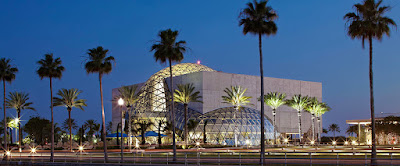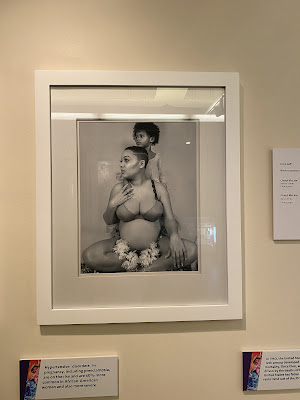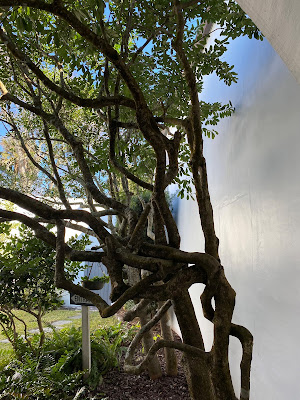St. Augustine, FL
February 17th, 2022
The Oldest House Museum Complex is one of the oldest still-standing structures in America. It gives a look into different periods of St. Augustine's occupation, including Spanish and British occupation. It has examples of architecture from both periods and includes information on how St. Augustine changed hands and evolved. It regularly updates its exhibits and is currently featuring a new exhibit on the history of surf culture in St. Augustine, and an art exhibit by Dr. Laura Mongiovi detailing the history of the slave trade. Its mission statement is as follows: "The mission of the Saint Augustine Historical Society is to acquire, preserve, and interpret the historical resources of St. Augustine and its sphere of influence for the benefit of the public through its stewardship of historic buildings and collections, research, publications, and educational programming."
Exterior Photo 1
Exterior Photo 2
Artifact 1
The artifact above is a quilt on display in the Oldest House Museum Complex surf culture exhibit. This quilt is set up to honor Hugh Shaw, a student of Flagler College who tragically passed away in 1983. He was a surfer, and his family chose to create the Hugh Shaw Memorial Longboard Classic, which is an annual event that takes place during Flagler College Alumni Weekend.
Artifact 2
The statue shown above is one of four statues situated around a small courtyard in the Oldest House Museum complex. These statues represent the four seasons. The one depicted represents springtime. They are carved out of marble and are very similar, aside from what they carry in their hands. The one above carries a plate of freshly grown fruit.
Image In Conversation 1
The Surf culture part of the museum reminds me of Soul Surfer, a movie that came out in 2011 when I was a child. This movie tells the true story of a talented surfer, Bethany Hamilton, who sadly loses her arm in a shark attack. The movie follows her as she tries to make a swift recovery and return to surfing with the support of her friends and family.
Image in Conversation 2
The above is a photograph that was taken during a temporary exhibit called
Magic, Mirth, and Morality. This photo was taken from the Lincolnville Museum and Cultural Center, however, this exhibit also had a pop-up section inside the Oldest House Museum Complex. This shows how versatile the Oldest House complex is, and how having a dedicated space for changing exhibits can diversify the experience of visiting a museum.
Literature in Conversation
Parable of the Sower by Octavia E. Butler
"As wind, as water, as fire, as life, God is both creative and destructive, demanding and yielding, sculptor and clay. God is Infinite Potential: God is Change" (Duffy and Jennings, 224).
This section of Parable of the Sower stuck out to me in relation to the Oldest House Museum because it highlights change. Every time I have visited the Oldest House, it has been changed. Rotating ideas and exhibits is a really good way to keep different histories flowing and to allow people to learn about what they're interested in. In the novel, Lauren emphasized how Change is a very personal concept. The definition could be vastly different for everyone. I believe this concept expands beyond religion and applies to history and preservation, as everyone has their own experiences with the same parts of history. Change is a good thing for the progression of society, and for development as a person, but this change means something different to everyone. Changing and rotating of museums helps facilitate this idea.
Creative Component
Description: A digital image of a surfboard decorated with butterflies and different shades of blue
I really enjoyed the section of the museum that depicted surf culture in St. Augustine, so in response, I decided to design my own surfboard. I cannot surf, but I love the beach and have grown up in Florida, so a lot of my friends growing up were surfers and I would love watching them practice. I was inspired by the butterflies I saw in the Lightner museum and decided to make a digital surfboard design centered around butterflies and shades of blue.



















































